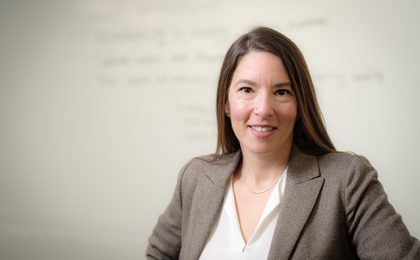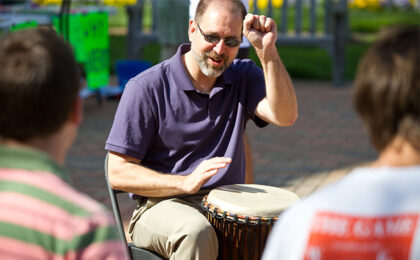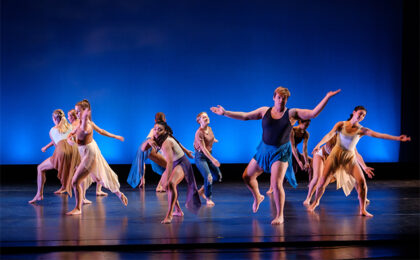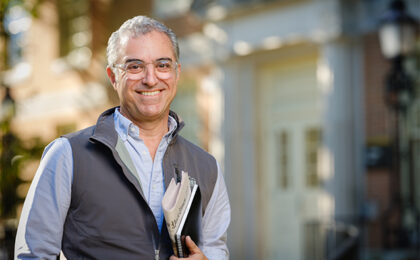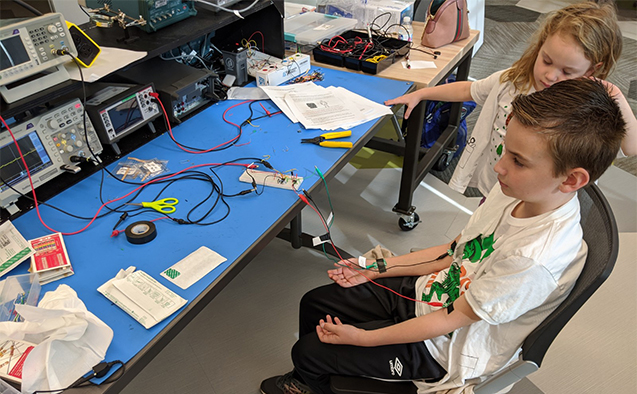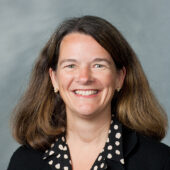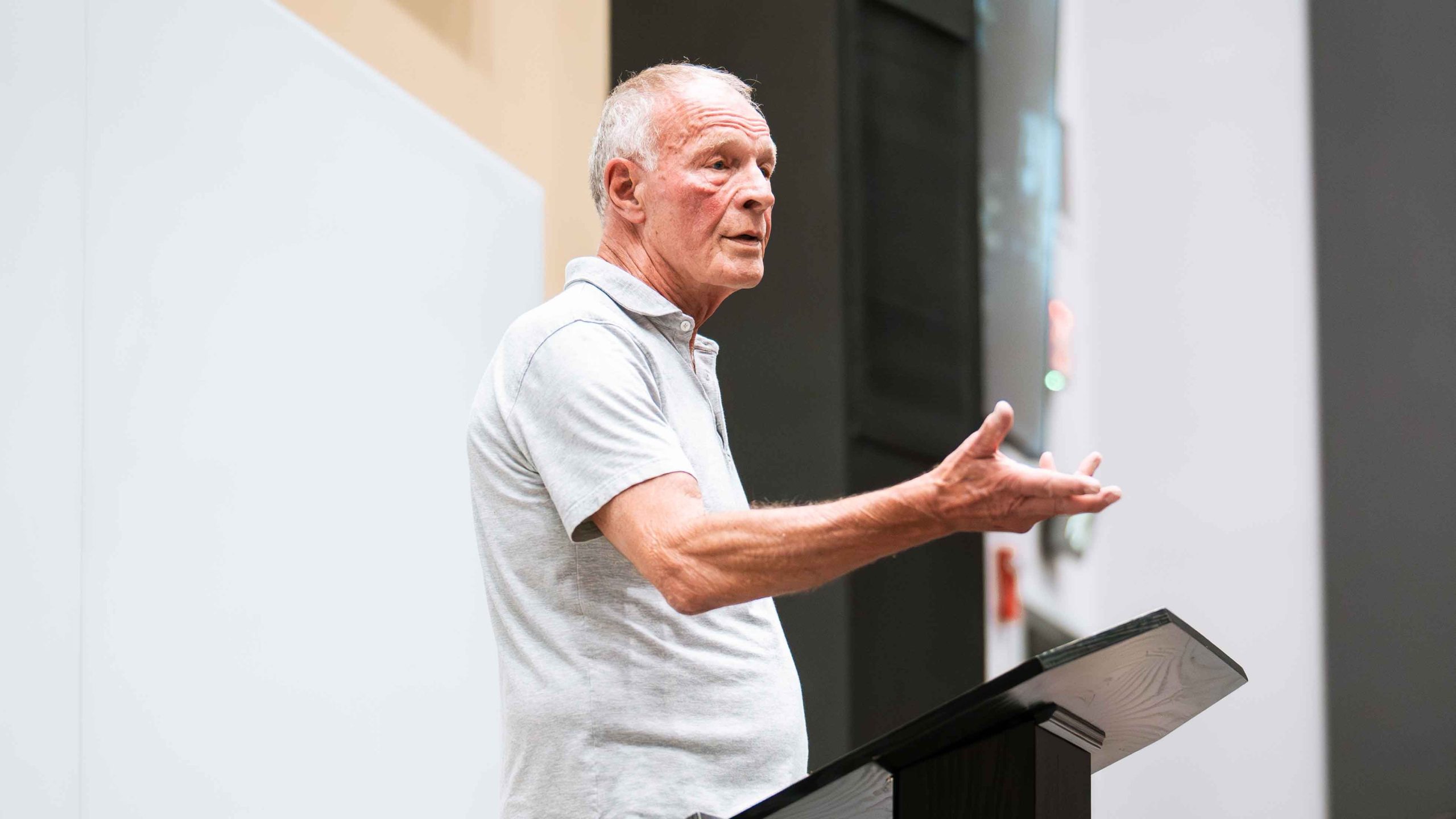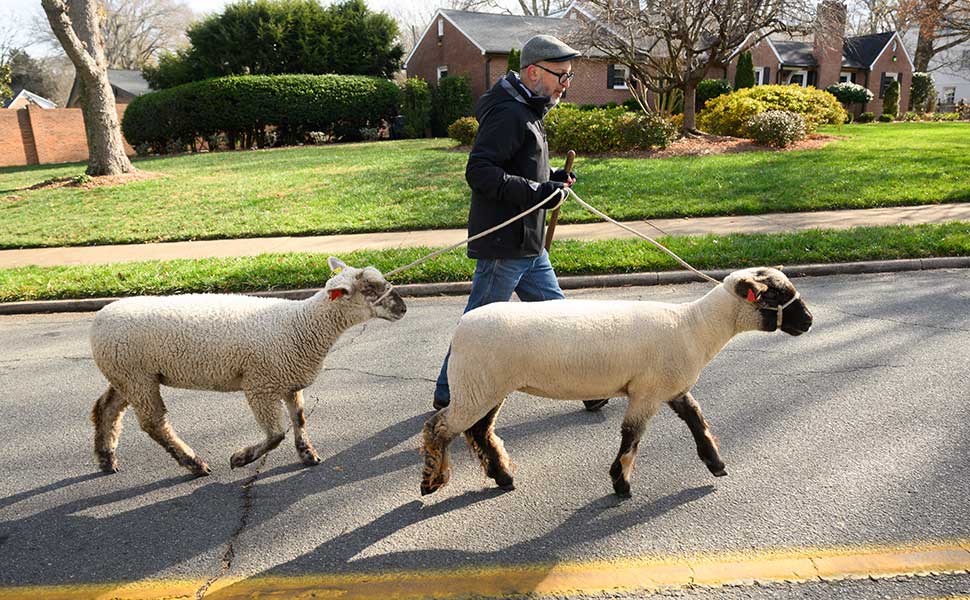Going remote, but staying connected
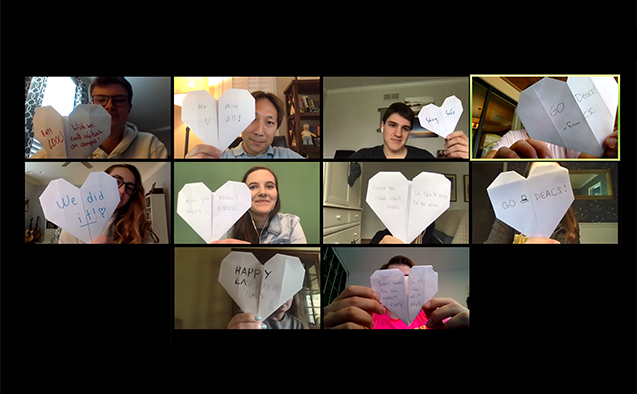
For math professor Jason Parsley, adapting to teaching from home meant beginning each class with high-quality computer animations. His favorite: a mathematical representation of a shape without an inside or outside called a Klein bottle. With photos of mac ‘n cheese and birthday cake, a well-stocked refrigerator and an empty grocery aisle, students in Amanda Gengler’s Sociology of Food class captured their experiences during the pandemic through the lens of food and created a website. Philosophy professor Emily Austin shifted away from group class meetings and replaced them with individual weekly Webex meetings with each student to discuss topics in morality and ethics one-on-one.
At the heart of a Wake Forest education are student-professor relationships and faculty are determined to find ways to keep connections strong no matter what form learning takes. During the spring semester, professors brought the personal experience into the digital space and bridged the physical distance created by the coronavirus pandemic. With a week to prepare, more than 700 faculty members, many of whom had never taught a remote course before, successfully transitioned more than 2,400 courses from the traditional classroom setting to a remote learning environment. They adapted both course content and teaching methods.
Using Zoom and Webex, Canvas and Camtasia, Padlet and TikTok, faculty have found tools to help connect with students learning from home instead of the classroom.
“The most important thing for a professor to do in a remote environment is communicate and connect with their students.” Betsy Barre, director of Wake Forest’s Center for the Advancement of Teaching
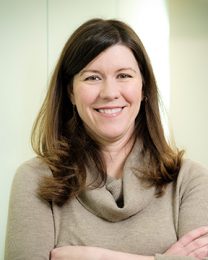
Betsy Barre
“I have been impressed by the generosity of our faculty as they have supported students and shared ideas with colleagues,” said Betsy Barre, director of Wake Forest’s Center for the Advancement of Teaching, who helped faculty make the digital transition in various ways including workshops, one-on-one sessions and the website, Keep Teaching.
“But most of all, I have been impressed by their resilience in the face of such momentous challenges.”
In many cases, teaching from home gave faculty a chance to connect with students on a more personal level. Environmental studies professor Chris Zarzar’s dog Leila helped him teach a lesson on tornado formation by showing off her rolling over trick. Law professor Marie-Amelie George brought some humor to remote teaching by posting a photo of her dog doing classwork and encouraging her students to do the same. To break up a recorded class lecture in his business law class, business professor Matthew Phillips’ middle-school-aged son explained the elements of a contract using Minecraft, and his daughter offered a joke of the day.
Other faculty invited guest speakers to join class digitally from around the world to enhance the students’ learning experience. Computer science professor Sam Cho invited supercomputing superstars from Cisco, IBM and Amazon to virtually visit his high-performance computing class for a panel discussion. Wake Washington students in politics professor Katy Harriger’s classes on electing the president and policymaking spoke with pollster Fred Yang and former congresswoman Donna Edwards via Zoom.

For many professors, the pandemic became a focus of their teaching. As an ongoing case study of financial risk, business professor Stephan Shipe pulled in real-world data and focused on the high stock market volatility surrounding COVID-19. Biology teaching professor Pat Lord’s virology class focused on how health systems have been affected by coronavirus and collaborated with fourth-year medical students for discussions, and professor Christine Coughlin created an on-demand symposium for law students to get up-to-speed on the legal and economic implications of pandemics and quarantines.
For Cho’s class, the hands-on lesson on parallel algorithms didn’t change. He always asks his students to make origami hearts. This year, because they were not in the classroom together for the assignment, he captured the students on Zoom showing their folded hearts and shared the image on Twitter.
Profiles in Remote Teaching
From dancers creating a video showing resilience and adaptability to education students using Flipgrid to teach first-graders, here are a few stories highlighting how faculty and students adapted to remote instruction and found a few silver linings.
Categories: Experiential Learning, Research & Discovery
Wake Forest News
336.758.5237
media@wfu.edu
Meet the News Team
Wake Forest in the News
Wake Forest regularly appears in media outlets around the world.

